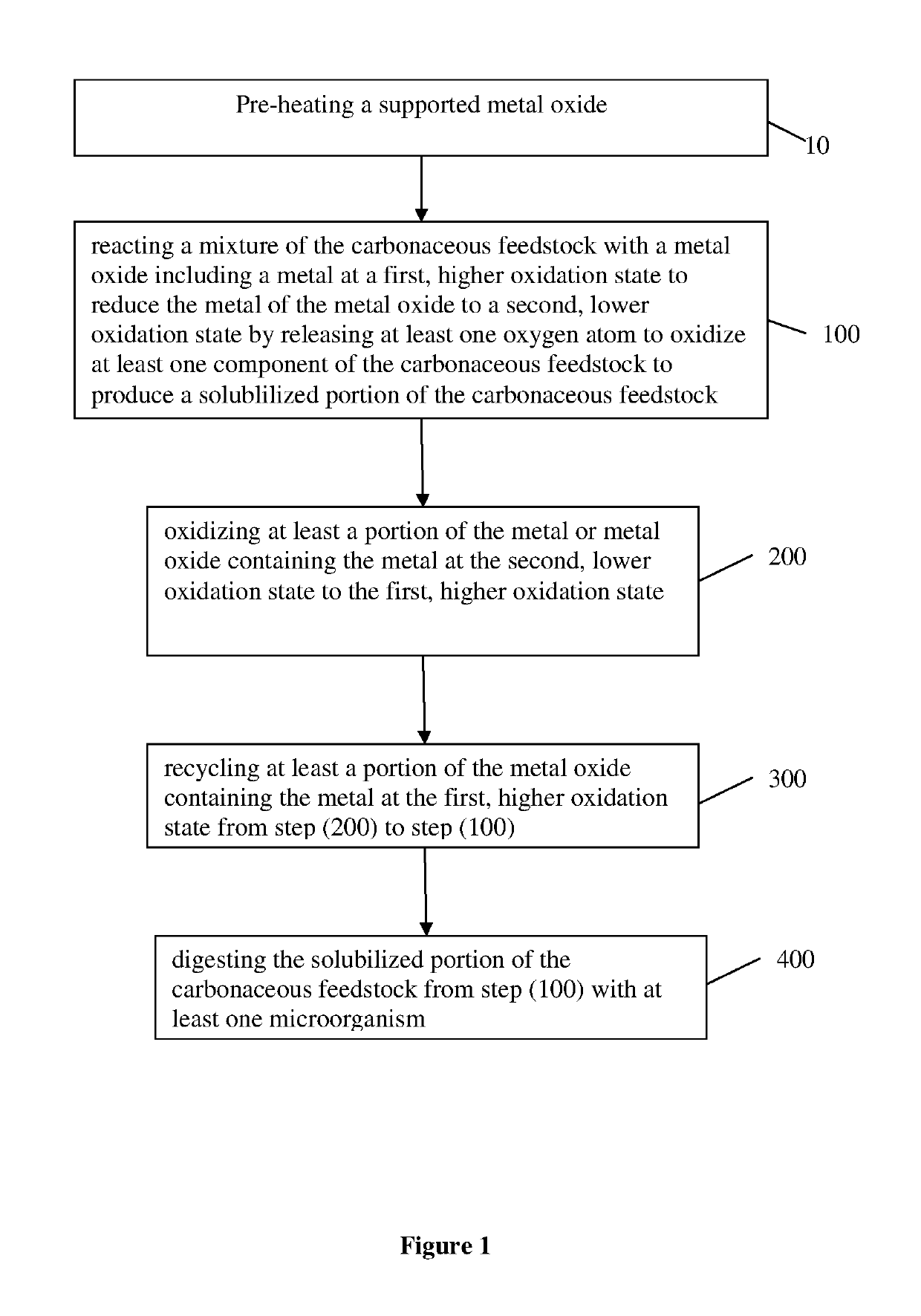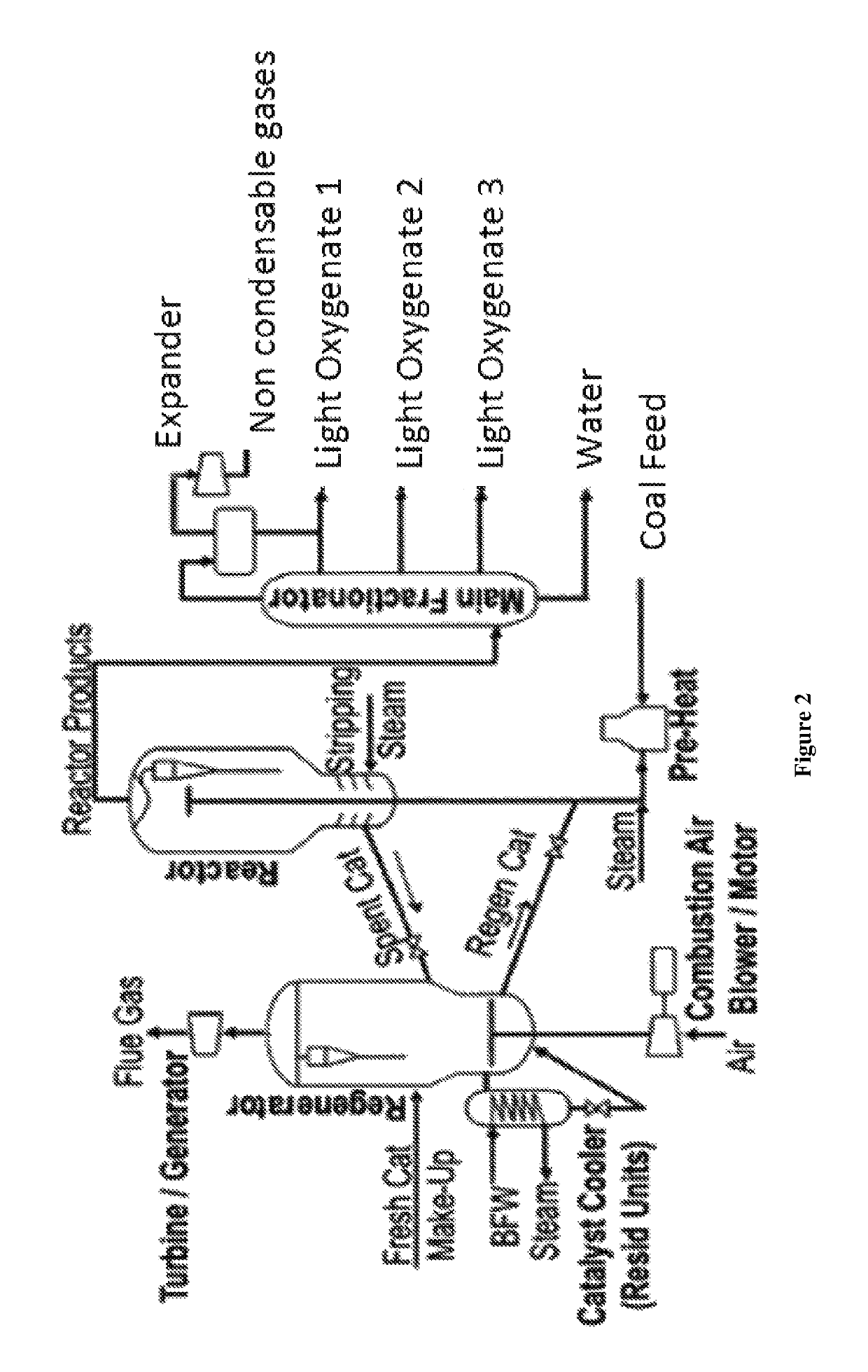Depolymerization process
a depolymerization and process technology, applied in biochemical apparatus and processes, waste based fuels, microorganisms, etc., can solve the problems of large capital investment, high process cost, and high energy consumption of processes
- Summary
- Abstract
- Description
- Claims
- Application Information
AI Technical Summary
Problems solved by technology
Method used
Image
Examples
example
[0147]500 g of a Powder River Basin (PRB) coal slurry was placed in a 2-L vessel and was the pressurized to 888 psi with air and then heated to 217° C. and was held at the temperature for 8 minutes. In a similar vessel, this process was repeated with 0.4 g of ZrO2 (2% ZrO2 / coal ratio) added to the vessel. The gaseous and liquid products from these two vessels were separately analyzed. The results in terms of yields of acetic acid and two dicarboxylic acids (DCA) on a feedstock basis, as well as carbon loss to CO2 and oxygen incorporation in the liquid products, are shown FIG. 3. The product included a variety of small organic molecules such as succinic acid (2.49%), malic acid (0.59%), fumaric acid (0.36%), glutaric acid (0.19%), propane 1,2,3-tricarboxylic acid (0.15%), and heptanoic acid (0.10%). See FIG. 3 for a GCMS spectrum of the acid fraction of this exemplary reaction of the present invention.
[0148]With ZrO2 added to the vessel, the acid yields are significantly higher as co...
PUM
| Property | Measurement | Unit |
|---|---|---|
| temperature | aaaaa | aaaaa |
| temperatures | aaaaa | aaaaa |
| pressure | aaaaa | aaaaa |
Abstract
Description
Claims
Application Information
 Login to View More
Login to View More - R&D
- Intellectual Property
- Life Sciences
- Materials
- Tech Scout
- Unparalleled Data Quality
- Higher Quality Content
- 60% Fewer Hallucinations
Browse by: Latest US Patents, China's latest patents, Technical Efficacy Thesaurus, Application Domain, Technology Topic, Popular Technical Reports.
© 2025 PatSnap. All rights reserved.Legal|Privacy policy|Modern Slavery Act Transparency Statement|Sitemap|About US| Contact US: help@patsnap.com



